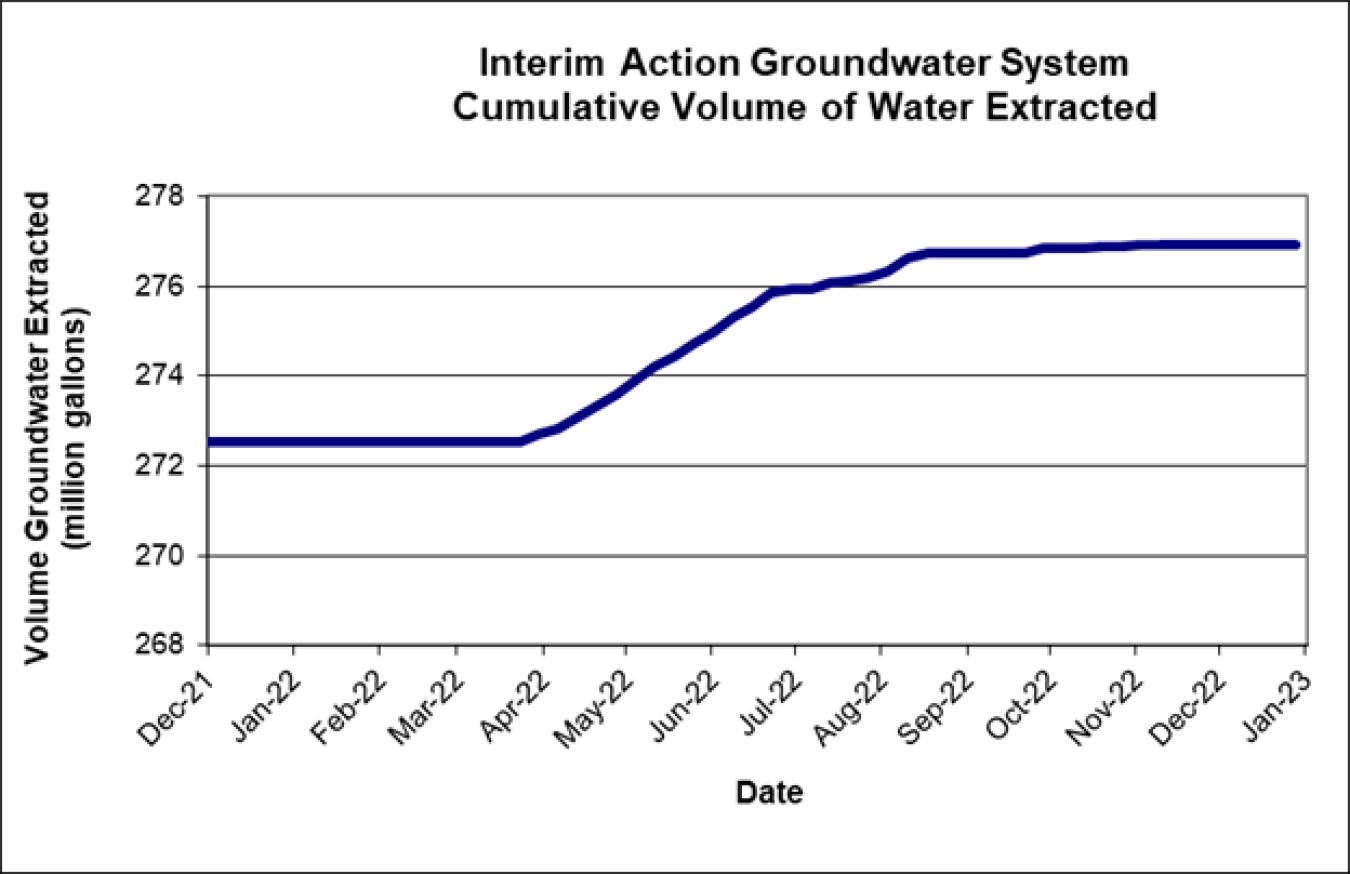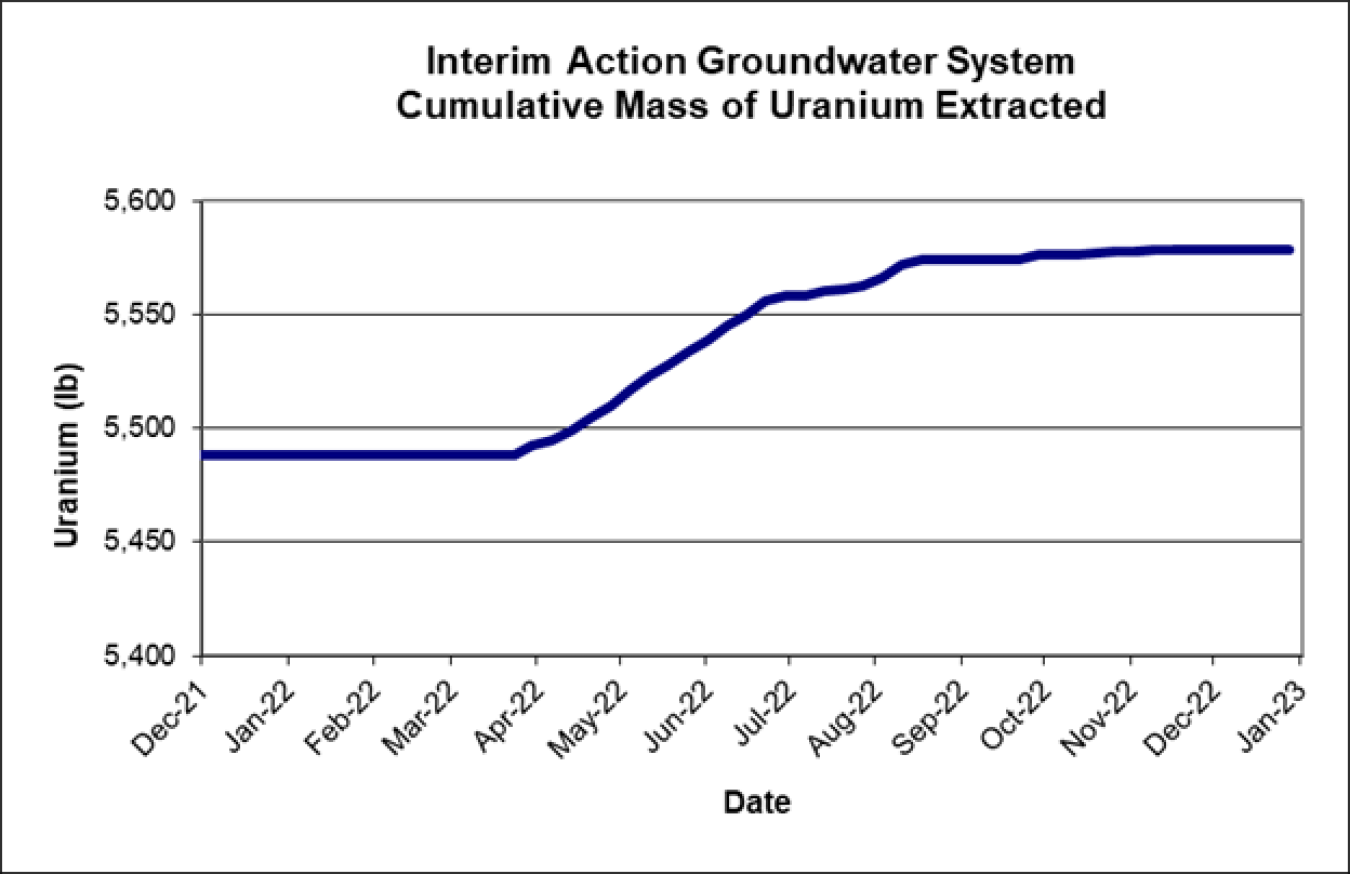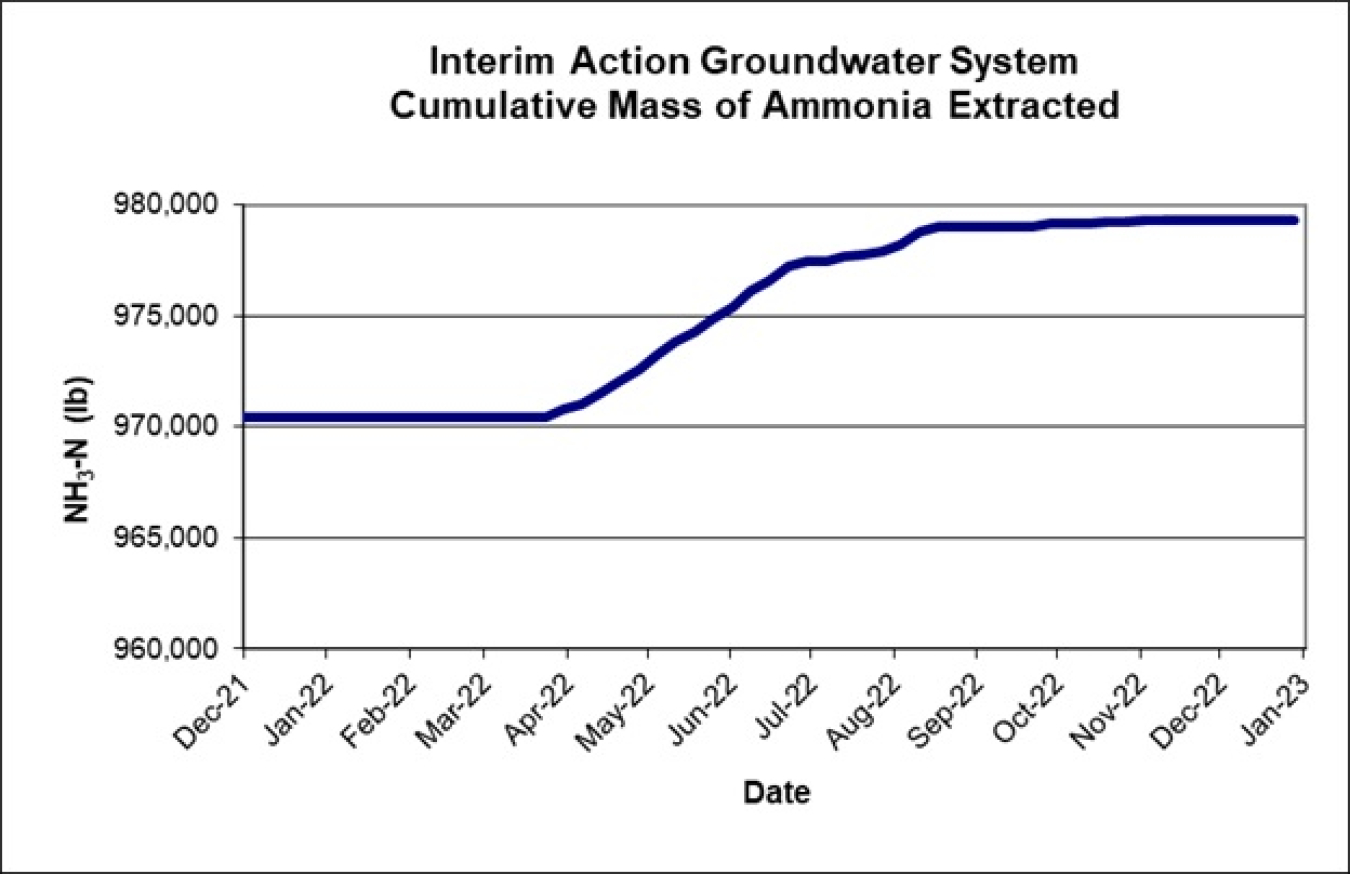In 2003, DOE implemented the first phase of an interim action system at the Moab site to address concerns regarding elevated ammonia levels in groundwater discharging to the Colorado River. Uranium is the other main contaminant of concern in groundwater. This first phase consisted of 10 extraction wells (called Configuration 1). Four additional configurations of wells have been added since then, for a current total of 42 wells that are designed to reduce the amount of ammonia and uranium that discharges to the river.
Groundwater extraction is through Configuration 5 wells, which are located closer to the tailings pile. Extracted groundwater is pumped to a storage tank for use as dust control on the pile. In 2022, more than 1 million gallons of groundwater has been removed from the subsurface since the extraction system was restarted in mid-March. Over the life of the Project, extraction has prevented 977,922 pounds of ammonia and 5,562 pounds of uranium from reaching the river.
Freshwater (diverted river water) is injected through wells in Configuration 4 as an additional way of minimizing the discharge of ammonia to the Colorado River. So far in 2022, more than 4,276,920 gallons of water has been injected.
DOE continues to evaluate the effectiveness of the interim action system, which will likely become part of the final groundwater remedy. See the Surface Water and Groundwater web page for project documents associated with the interim action.
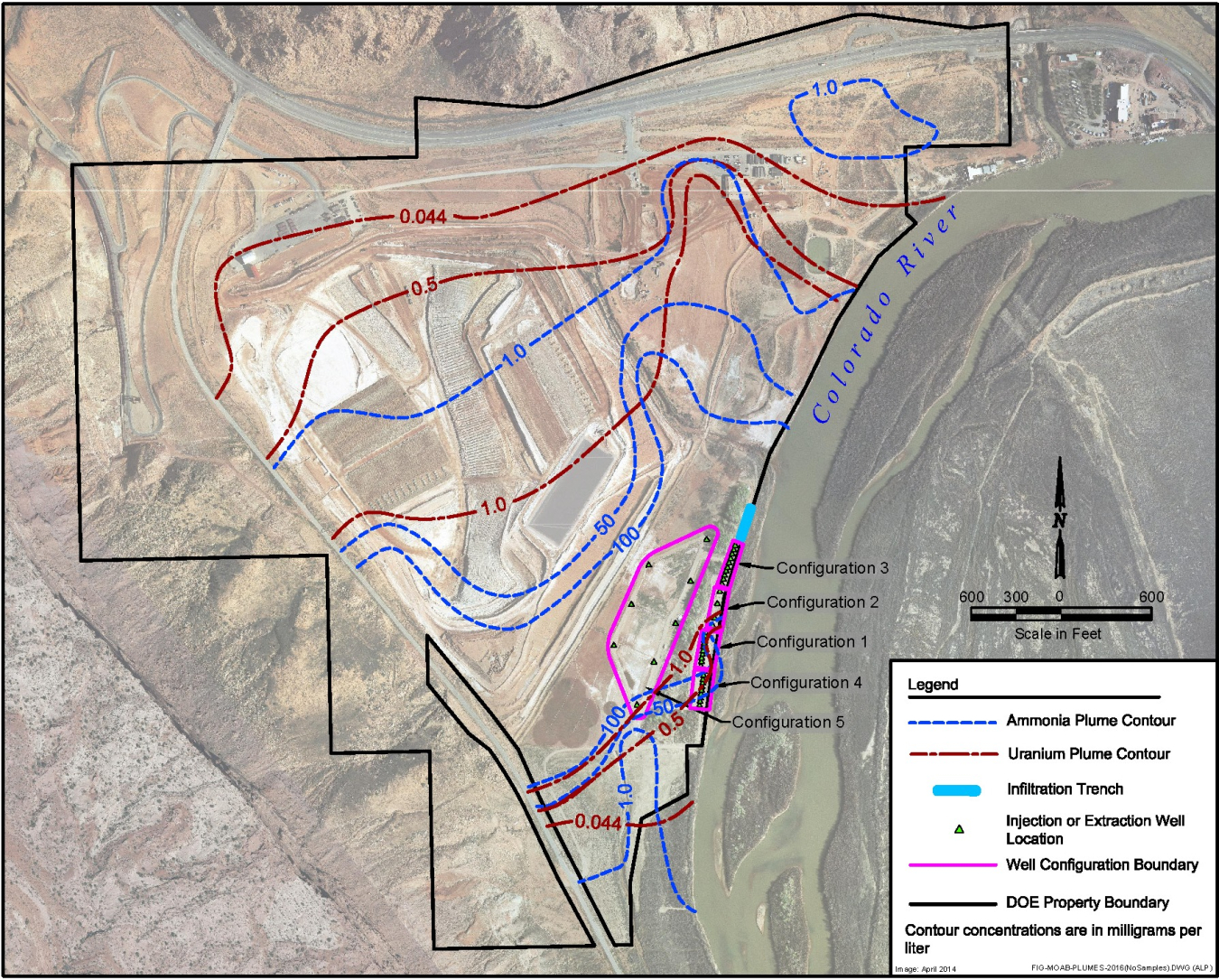
Ammonia and Uranium Concentration Contours and Interim Action Configurations
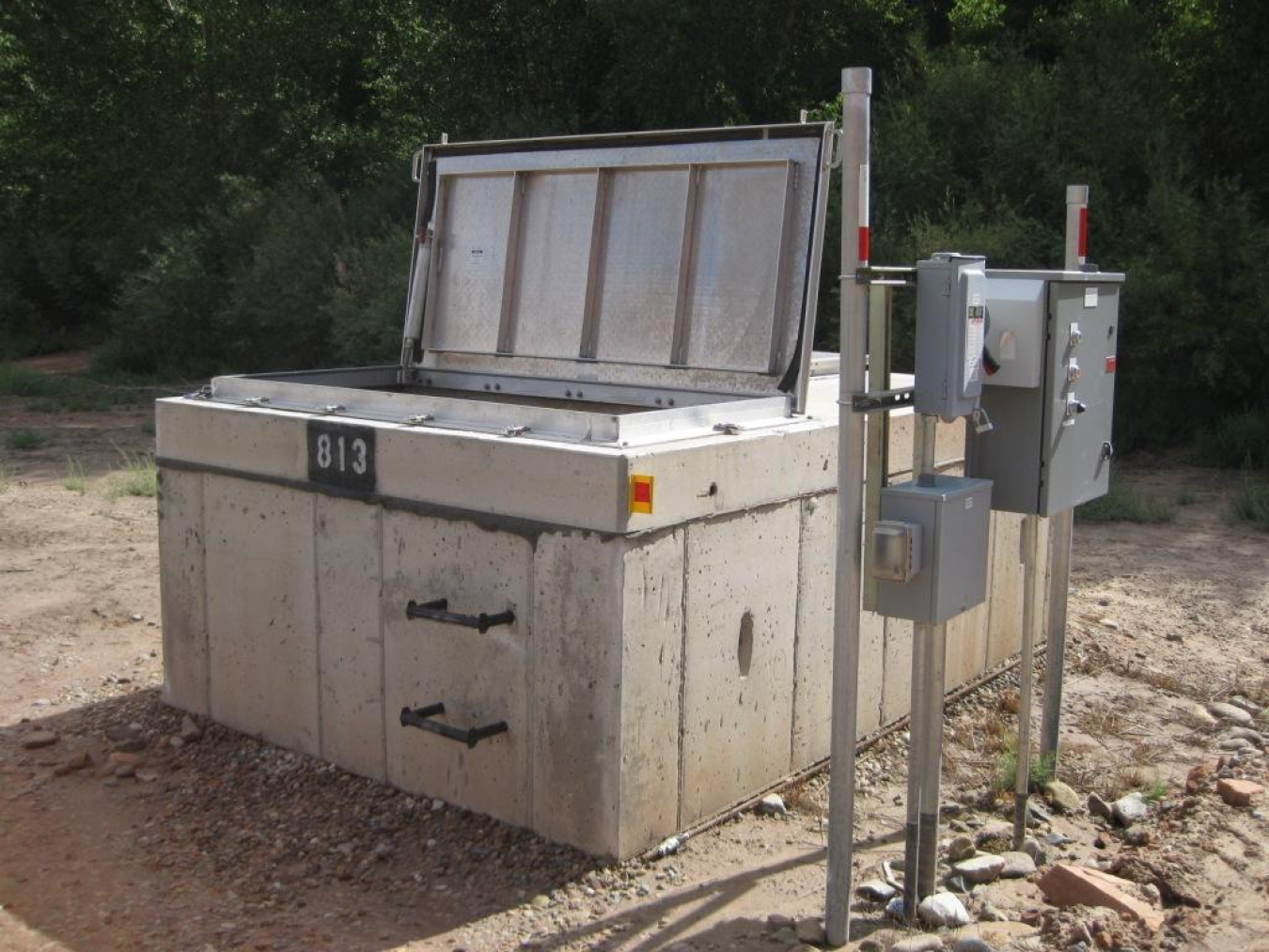
One of the well vaults housing wells used to extract groundwater before it discharges into the Colorado River.
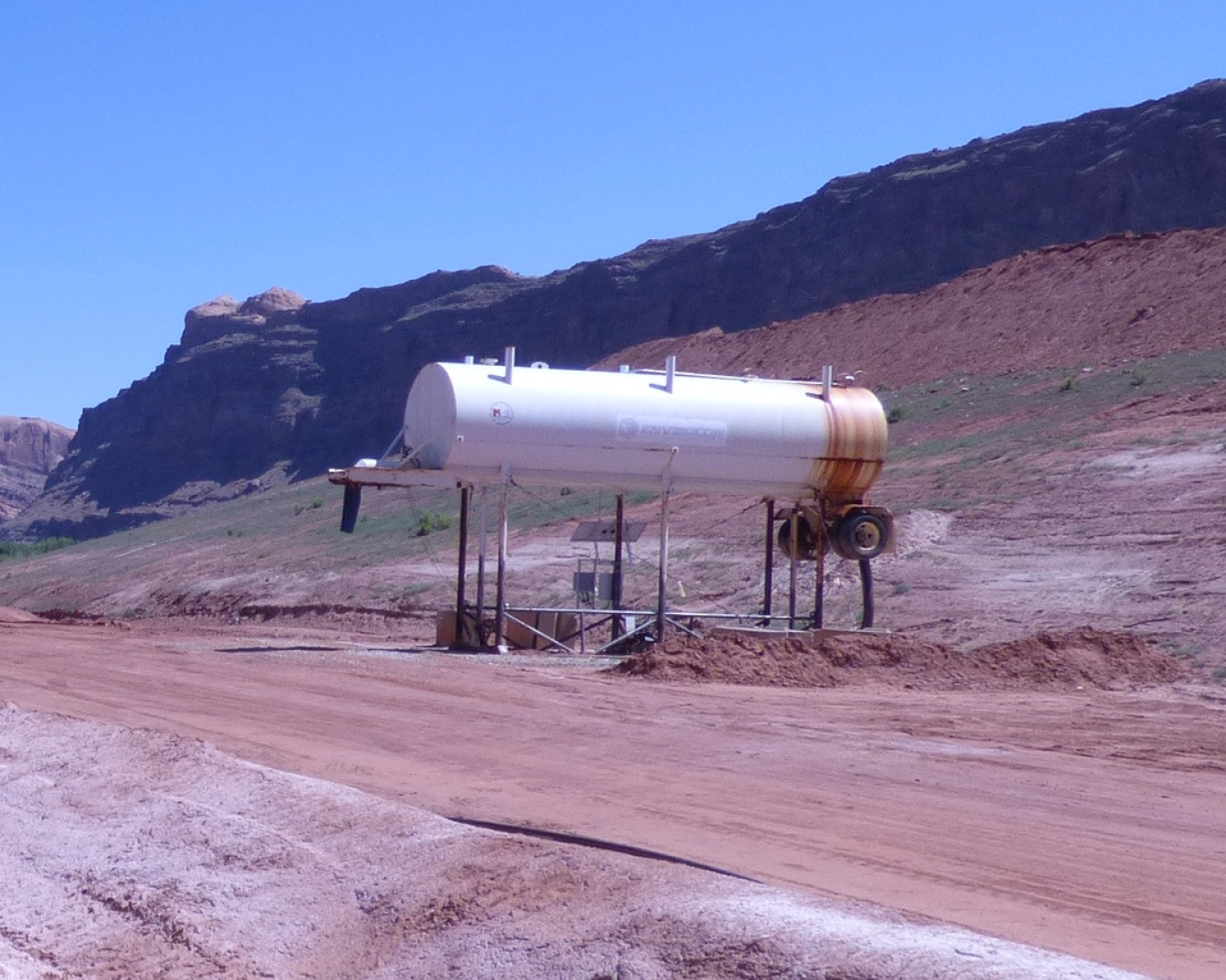
Extracted groundwater is fed to this storage tank.
